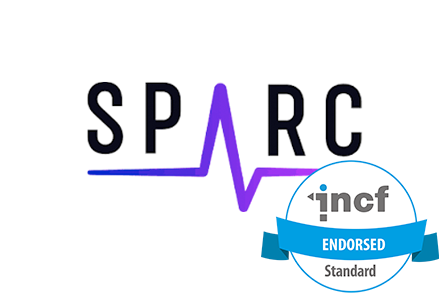
The SPARC data structure is a consistent file structure and naming convention, based on the Brain Imaging Data Structure (BIDS) to ensure that the diverse types of data in SPARC is organized in a similar manner. The current version is SDS 2.0 (released June 24, 2022).
Links:
SPARC Portal
Navigating SPARC Datasets
Publications:
SPARC Data Structure: Rationale and Design of a FAIR Standard for Biomedical Research Data (bioRxiv) https://doi.org/10.1101/2021.02.10.430563
Commentaries on endorsed standards
https://www.incf.org/commentaries/sparcSupporting software
Supporting Software
Data organization and submission:
-
SODA (Software to Organize Data Automatically) for SPARC uploads datasets in the SDS 2.0 format https://fairdataihub.org/sodaforsparc
Visualization:
-
SPARC Dataset (SDS) Viewer (https://sparc.science/resources/5jX5QkaXX3fA3GT772cxbd) is a web-based software tool that gives users a visual overview of the folders, files, subjects, samples, and metadata associated with datasets that adhere to the SPARC Dataset structure (SDS) on the SPARC Portal.
Quality Assessment:
-
SDS Validator (https://sparc.science/resources/2KDqTkCvu8INaiswlCgv7) is a python tool to validate that datasets adhere to SDS
-
A docker image can be used to run single dataset pipelines https://hub.docker.com/r/tgbugs/musl/tags?page=1&name=sparcur-user. The specification for building the image is here https://github.com/tgbugs/dockerfiles/blob/master/source.org#sparcur-user .
Other Tools:
-
SPARC.science (repository)
-
12 LABOURS DigitalTWINS platform https://github.com/ABI-CTT-Group/digitaltwins-api?tab=readme-ov-file#storing-datasets-in-the-digitaltwins-platform
Additional URL:
SPARC datasets span many different fields, including anatomy, physiology, and modeling and simulation. Some example uses:
- Understand the structure and function of the vagus nerve
- iWAT (inguinal White Adipose Tissue) sympathetic innervation circuit pseudorabies viral tracing in reporter mice contributed by Muenzberg et al. (2021) DOI: 10.26275/mhq6-csy1
- Visualizing sympathetic projections in the intact brown adipose tissue depot in the mouse contributed by Seoeun Lee and Lori Zeltser (2020) DOI: 10.26275/ge74-ypxd
- Identification of peripheral neural circuits that regulate heart rate using optogenetic and viral vector strategies by Hanna et al. (2021) DOI:10.26275/0ce8-cuwi.

